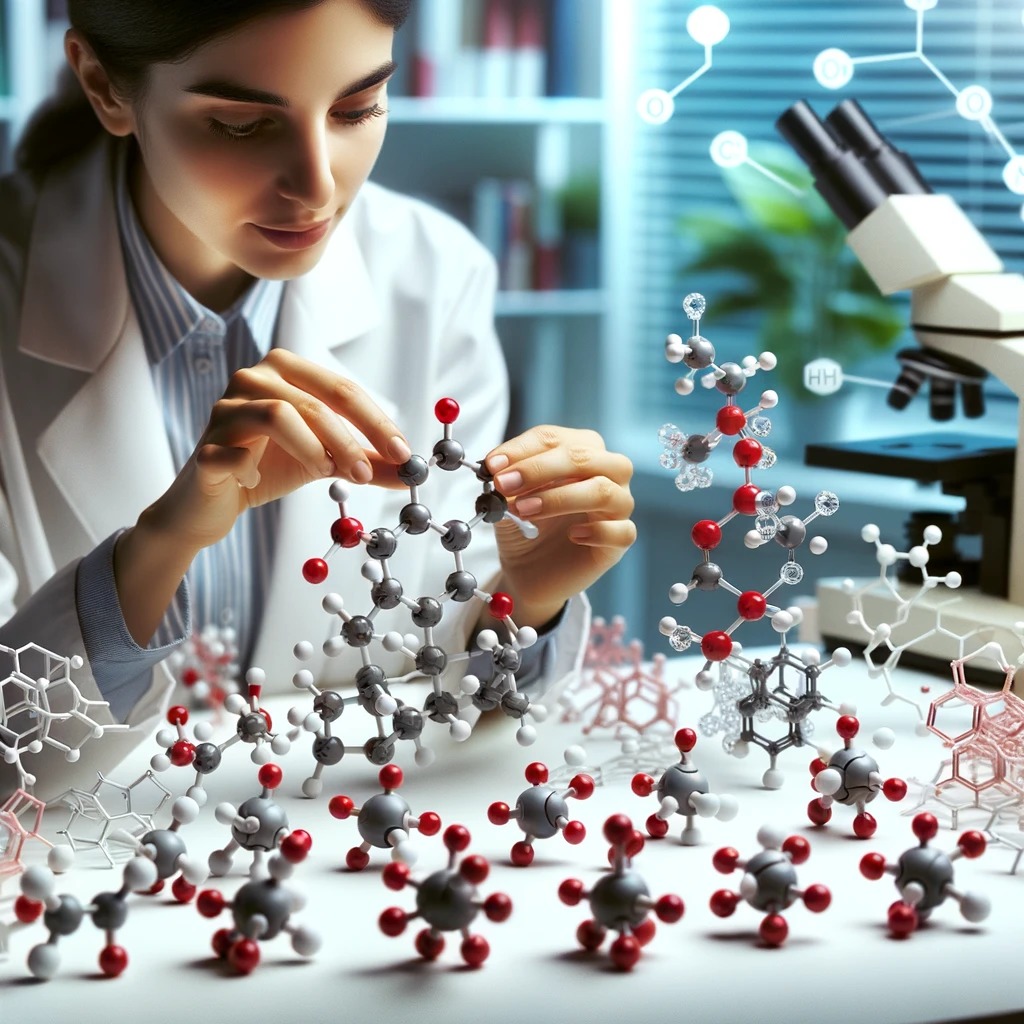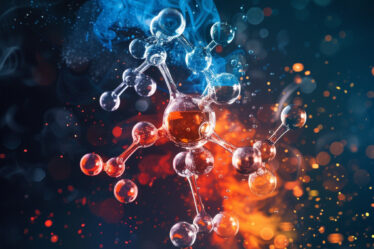
Welcome to your comprehensive guide on amino acids. If you’ve ever wondered, “how many amino acids are there?” you’re in the right place. Whether you’re a student in need of biochemistry lessons, a private teacher offering tutoring, or simply someone intrigued by biochemistry, this blog will serve as your go-to resource. Amino acids are not just the alphabet of life; they are the words and sentences that make up the language of biochemistry. They play critical roles in processes like protein synthesis, metabolic pathways, and neurotransmitter functions.
Here’s a Glimpse of What You’ll Learn:
- How many amino acids are there?
- Structural components of amino acids.
- Classification of amino acids based on various factors.
- Functions of amino acids in biological systems.
- The mechanisms of amino acid synthesis.
Are you interested in other subjects? We’ve got great free study guides for Biology, English, French, and Music.
The Basics of Amino Acids: How Many Amino Acids Are There?
What Are Amino Acids? A Comprehensive Definition for Beginners
Amino acids act as the building blocks for proteins and are composed of a central carbon atom linked to four distinct entities: a carboxyl group (-COOH), an amino group (-NH2), a hydrogen atom, and a specialized R-group or side chain. These R-groups impart unique characteristics to each amino acid, influencing their role in vital biological activities such as protein formation, energy metabolism, and neural signaling.
How Many Amino Acids Are There? A Complete List of Essential and Non-Essential Types
When it comes to biochemistry classes or private tutoring sessions, the question “How many amino acids are there?” often arises. The answer is 20 standard amino acids that form the proteins in our bodies. These are further categorized into essential and non-essential amino acids:
| Essential Amino Acids | Non-Essential Amino Acids |
|---|---|
| Leucine | Alanine |
| Isoleucine | Asparagine |
| Lysine | Aspartic Acid |
| Methionine | Cysteine |
| Phenylalanine | Glutamic Acid |
| Threonine | Glutamine |
| Tryptophan | Glycine |
| Valine | Proline |
| Arginine* | Serine |
| Hisitidine* | Tyrosine |
Essential amino acids are those that your body cannot synthesize on its own, making it crucial to obtain them through your diet. In contrast, non-essential amino acids can be produced by your body and are not solely dependent on dietary intake. Note that Arginine and Histidine are considered conditionally essential, meaning they are generally non-essential but may be required in larger amounts during periods of illness or stress.
Unveiling the Structural Components of Amino Acids
General Structure of Amino Acids: More Than Just Building Blocks
Each amino acid is an organic molecule featuring a central carbon atom, termed the alpha carbon. This alpha carbon forms bonds with four distinct entities: a hydrogen atom, an amino group (-NH2), a carboxyl group (-COOH), and a specialized R-group or side chain. The unique nature of the R-group distinguishes one amino acid from another. Additionally, all amino acids except glycine are chiral, signifying that they have mirror-image forms known as enantiomers. Don’t forget to read the introduction to the Periodic Table and Functional Groups in Organic Chemistry.
The Four Pillars of Amino Acid Structure
- Central Carbon Atom (C): Also known as the alpha carbon, it serves as the backbone.
- Amino Group (NH2): Vital for linking amino acids together.
- Carboxyl Group (COOH): Enables the formation of peptide bonds.
- R-Group: The side chain that defines the amino acid’s properties.
Side Chains: The Unique Identifiers and Their Functional Roles
Side chains, or R-groups, are what make each amino acid unique. These can be as simple as a hydrogen atom in glycine or as complex as the indole group in tryptophan. The chemical nature of the side chain—whether it’s acidic, basic, polar, or non-polar—affects the amino acid’s solubility in water, its acidity or basicity, and its propensity to engage in hydrogen bonding. These properties, in turn, influence the amino acid’s role in protein structure and function and its participation in metabolic pathways.
Stereoisomerism: The L and D Configurations
Amino acids exhibit stereoisomerism, meaning they can exist in spatial arrangements that are mirror images of each other. The most common forms are the L and D configurations. In nature, and especially in biochemistry lessons, you’ll find that only L-amino acids are used in biological protein synthesis. The D forms are rare and usually found in some bacterial cell walls and some antibiotic peptides. The orientation of the amino group relative to the carboxyl group on the alpha carbon determines these configurations.
Discover how Hydrogen Bonds and Covalent Bonds are formed, and learn to Differentiate Them from Ionic Bonds.
The Classification of Amino Acids: A Comprehensive Guide
1. Classification Based on Functionality: Beyond the Basics
Amino acids are categorized by the nature of their side chains’ functional groups. For example, aspartic acid and glutamic acid, which have carboxylic acid groups, fall under the acidic category. Conversely, lysine and arginine, containing amino groups, are considered basic. Additionally, certain amino acids like methionine have specialized functions, including serving as the starting point for protein synthesis.
- Acidic Amino Acids: Aspartic Acid, Glutamic Acid
- Basic Amino Acids: Lysine, Arginine
- Specialized Functions: Methionine for protein synthesis
2. Classification Based on Nutritional Requirements: Essential vs. Non-Essential
From a nutritional perspective, amino acids are divided into essential and non-essential types. Essential amino acids are those that the human body can’t produce, making it imperative to acquire them through your diet. On the flip side, the body can synthesize non-essential amino acids. There’s also a third category, known as conditionally essential amino acids, which become essential under specific physiological conditions like illness or stress.
- Essential Amino Acids: Must be obtained through diet
- Non-Essential Amino Acids: Synthesized by the body
- Conditionally Essential Amino Acids: Essential under specific conditions
3. Classification Based on Polarity: Understanding Solubility and Interactions
The polarity of the side chain also serves as a basis for classification. Polar amino acids like serine and threonine are more soluble in water and often found on the exterior of proteins. Non-polar amino acids like leucine and isoleucine are less soluble in water and are typically located in the interior of proteins. Some amino acids like aspartic acid and lysine are charged and are classified as polar charged.
- Polar Amino Acids: Serine, Threonine
- Non-Polar Amino Acids: Leucine, Isoleucine
- Polar Charged Amino Acids: Aspartic Acid, Lysine
The Multifaceted Functions of Amino Acids
Protein Synthesis: The Building Blocks in Action
Amino acids are the fundamental units that makeup proteins. Through a process called translation, amino acids are linked together by peptide bonds to form polypeptide chains. These chains then fold into specific three-dimensional structures to become functional proteins. Whether it’s enzymes, antibodies, or structural proteins, amino acids are at the core of these biological macromolecules.
Metabolic Pathways: The Chemical Maestros
Amino acids are integral to various metabolic pathways, not just protein formation. For instance, alanine and glutamine are key in the gluconeogenesis pathway, which creates glucose from non-carbohydrate sources. Additionally, amino acids like arginine, ornithine, and citrulline are vital in the urea cycle, a process that detoxifies ammonia in the liver.
Introduction to Carbohydrates, Lipids, and Fatty Acids.
Neurotransmitter Function: The Neural Messengers
Some amino acids function as neurotransmitters or precursors to neurotransmitters. For instance, glutamate and aspartate act as excitatory neurotransmitters in the central nervous system. On the other hand, gamma-aminobutyric acid (GABA), which is derived from glutamate, serves as an inhibitory neurotransmitter. These amino acids are pivotal in neural signaling and maintaining the brain’s balance of excitatory and inhibitory signals.
Decoding the Intricacies of Amino Acid Synthesis
Transamination and Deamination: The Chemical Ballet
Transamination and deamination are two pivotal biochemical processes involved in amino acid synthesis. Transamination is the transfer of an amino group from one molecule to another, typically from an amino acid to a keto acid. This process is catalyzed by enzymes known as transaminases. Deamination, on the other hand, is removing an amino group from an amino acid, converting it into a keto acid and ammonia. This process is crucial for the catabolism of amino acids and is often a step in the urea cycle.
Genetic Code: The Blueprint of Life
The genetic code is the set of rules that translates the information stored in DNA into the amino acid sequence of proteins. Each amino acid is coded for by a three-nucleotide sequence known as a codon. For example, the codon AUG codes for the amino acid methionine and also serves as the start codon for protein synthesis. The genetic code is degenerate, meaning multiple codons can code for the same amino acid, providing a level of redundancy that allows for some mutations without altering the resulting protein.
How Tutoring Can Elevate Your Understanding of Amino Acids
Personalized Learning: Tailored to Your Needs
Tutoring offers a personalized learning experience that can be tailored to your specific needs. Whether you’re struggling with the basics or looking to delve deeper into advanced topics like amino acid metabolism or protein synthesis, a private teacher can adapt the curriculum to suit your learning pace and objectives.
Hands-On Experience: Beyond Theoretical Knowledge on Amino Acids
While textbooks and lectures provide a solid foundation, there’s no substitute for hands-on experience . Tutoring sessions can include lab exercises, interactive models, and real-world applications of amino acids in biochemistry, offering a more holistic understanding of the subject.
Clarification and Reinforcement: Mastering the Complexities of Amino Acids
Amino acids and biochemistry can be complex subjects with intricate details. Tutoring provides an opportunity for immediate clarification of doubts and reinforcement of concepts, ensuring that you grasp the nuances of amino acid structure, function, and significance.
Are you looking for a chemistry tutor? Enter “chemistry tutor Glasgow” or “chemistry teacher Sheffield” on your preferred tutoring platform, such as meet’n’learn, to find a teacher who can meet your specific needs.
If you thrive in group learning environments, search “chemistry classes London” or “chemistry lessons Manchester” online to discover local schools offering chemistry lessons.
Conclusion: The Multifaceted World of Amino Acids
In this comprehensive guide, we’ve journeyed through the complex landscape of amino acids, from their structural diversity to their multifaceted functions, clinical significance, and dietary importance. Whether you’re a student seeking to deepen your understanding through biochemistry classes or considering private tutoring for more personalized instruction, the study of amino acids offers a rich tapestry of knowledge that intersects with various fields of science and medicine.
Ethanol and Alcohols in chemistry, Fermentation, and how Beer is Made.
FAQ: Frequently Asked Questions on How Many Amino Acids Are There?
1. What are the 20 standard amino acids?
The 20 standard amino acids include alanine, arginine, asparagine, aspartic acid, cysteine, glutamine, glutamic acid, glycine, histidine, isoleucine, leucine, lysine, methionine, phenylalanine, proline, serine, threonine, tryptophan, tyrosine, and valine.
2. What is the difference between essential and non-essential amino acids?
Essential amino acids cannot be synthesized by the body and must be obtained through diet. The body can synthesize non-essential amino acids which are not strictly required in the diet.
3. How are amino acids involved in protein synthesis?
Peptide bonds link togetherAmino acids to form polypeptide chains, which then fold into functional proteins. This process is known as protein synthesis.
4. What roles do amino acids play in metabolism?
Amino acids are involved in various metabolic pathways, including gluconeogenesis, the urea cycle, and the synthesis of neurotransmitters.
5. How can tutoring help me understand amino acids better?
Tutoring offers personalized instruction and hands-on experience, providing a deeper understanding of amino acids and their various roles in biochemistry.
6. What are conditionally essential amino acids?
Conditionally essential amino acids are usually non-essential but become essential under specific physiological conditions such as illness or stress.
Want to expand your chemistry horizons? Our World of Chemistry offers a plethora of free educational blogs.
References:
1. ThoughtCO
2. Britannica
3. Wikipedia



